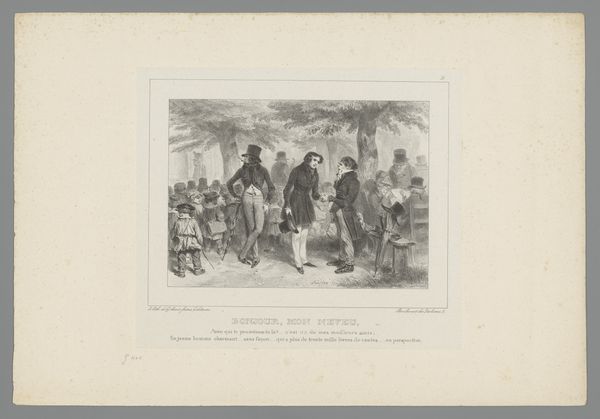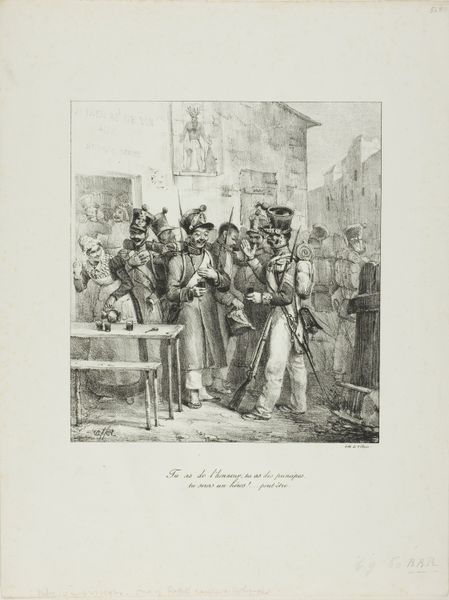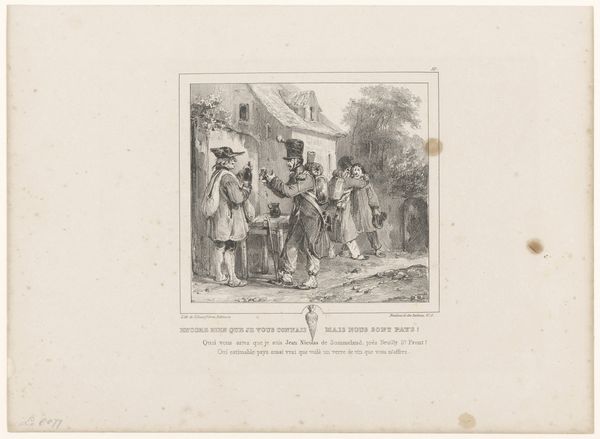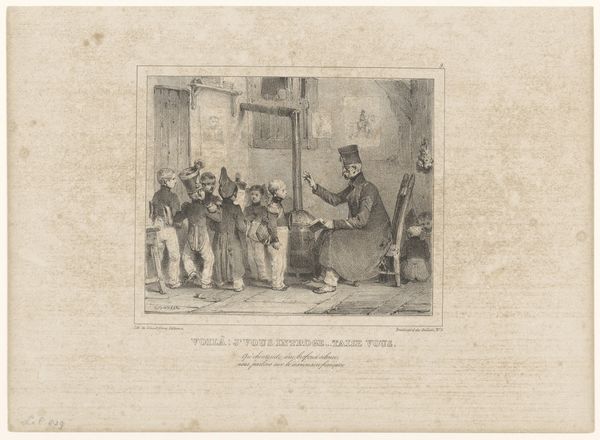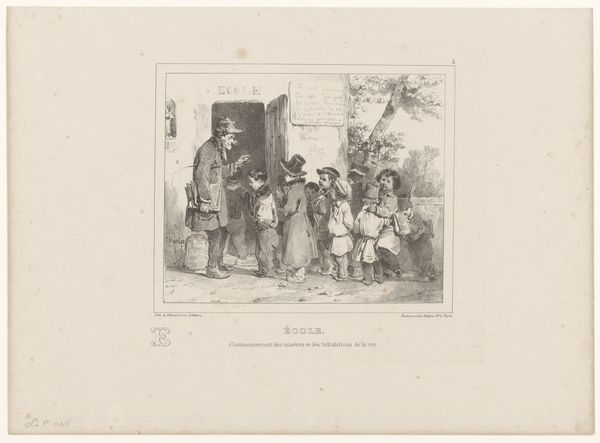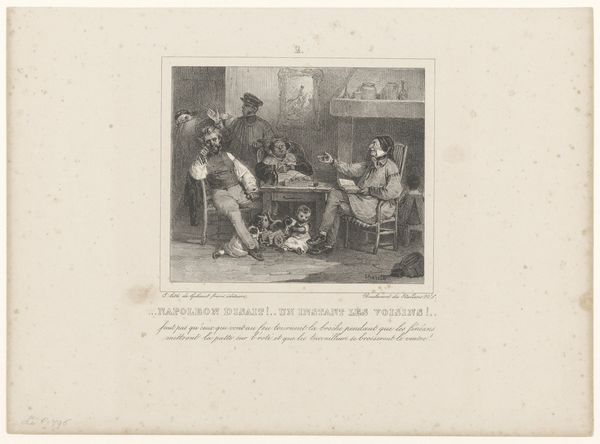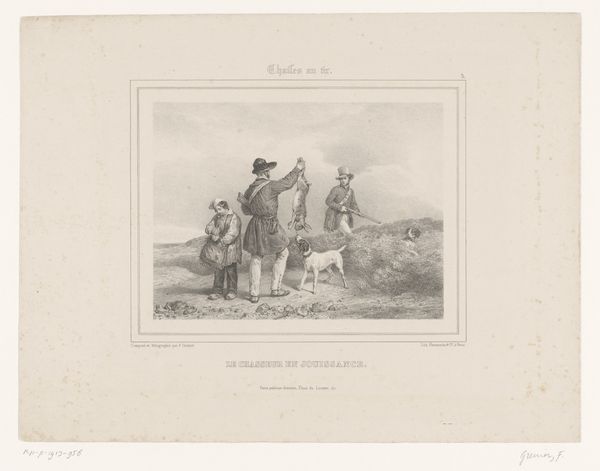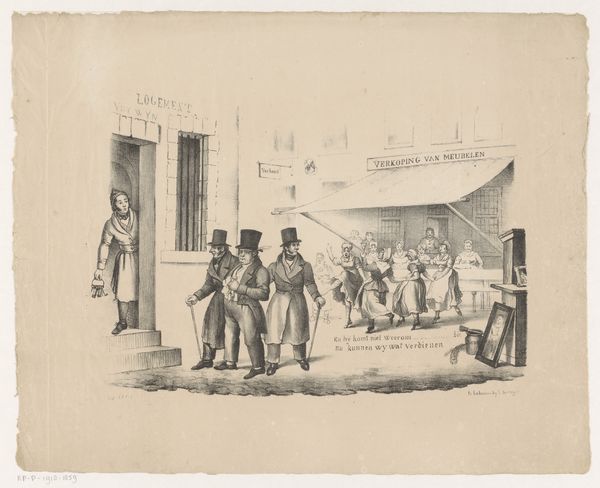
drawing, print, engraving
#
drawing
#
16_19th-century
#
narrative-art
# print
#
caricature
#
romanticism
#
genre-painting
#
engraving
Dimensions: height 247 mm, width 338 mm
Copyright: Rijks Museum: Open Domain
Curator: This is "Two Men Preparing for a Duel" by Nicolas Toussaint Charlet, created around 1836. It's currently housed in the Rijksmuseum. What are your first impressions? Editor: It's grimly humorous. I am immediately drawn to the body language—the forced civility amid palpable tension. But tell me more about the technique. Is this printmaking? Curator: Yes, it is an engraving, a medium allowing for precise lines that are ideal for caricature, of which Charlet was fond. We can see how printmaking democratizes access to this narrative artwork. What materials and processes catch your eye? Editor: The use of hatching and cross-hatching to create shadow is quite striking; observe, for instance, how the woman appears almost spectral in the building's entryway to emphasize her plight, this common symbol of women's disenfranchisement is also indicative of impending doom. Note, also, the visual emphasis on conflict itself, reflecting a society wrestling with class and political instability, with social upheaval. What about its cultural impact, and the social commentary in general? Curator: Definitely. This ties into Charlet's broader artistic circle and his participation in a culture critical of class disparity in early 19th century France. Also worth considering: the access printmaking granted a growing bourgeois class as patrons, a market influencing content and themes within art, no doubt. Editor: That’s interesting because I immediately think of the figure brandishing the pistol, a universal representation of authority or oppression and in a broader sense, the social constructs being challenged. In other words, do you agree, it's an image about the human condition beyond its material existence? Curator: Agreed! And the material conditions facilitated such profound questions in the artwork itself, now preserved at the Rijksmuseum. Editor: Precisely, these symbols continue echoing through time. The piece compels us to reflect upon our own engagement within systems and societal rituals of violence. Curator: I would conclude that considering the methods of production together with iconic elements offers us richer insights and better interpretation of such pieces of art, such as this one. Editor: A wonderful intersection where method and symbol meet, illuminating the past in ways both unsettling and enlightening!
Comments
No comments
Be the first to comment and join the conversation on the ultimate creative platform.
